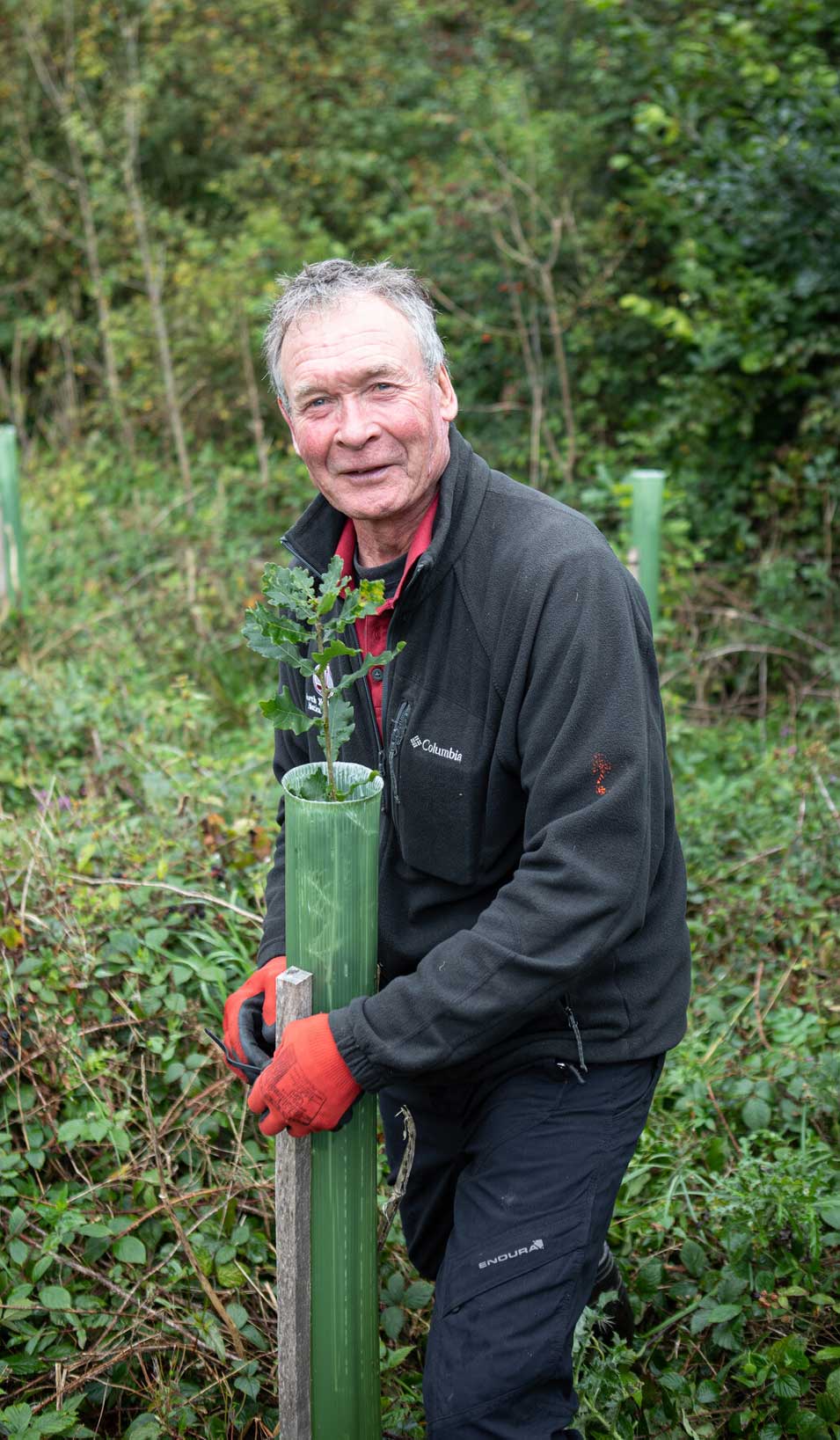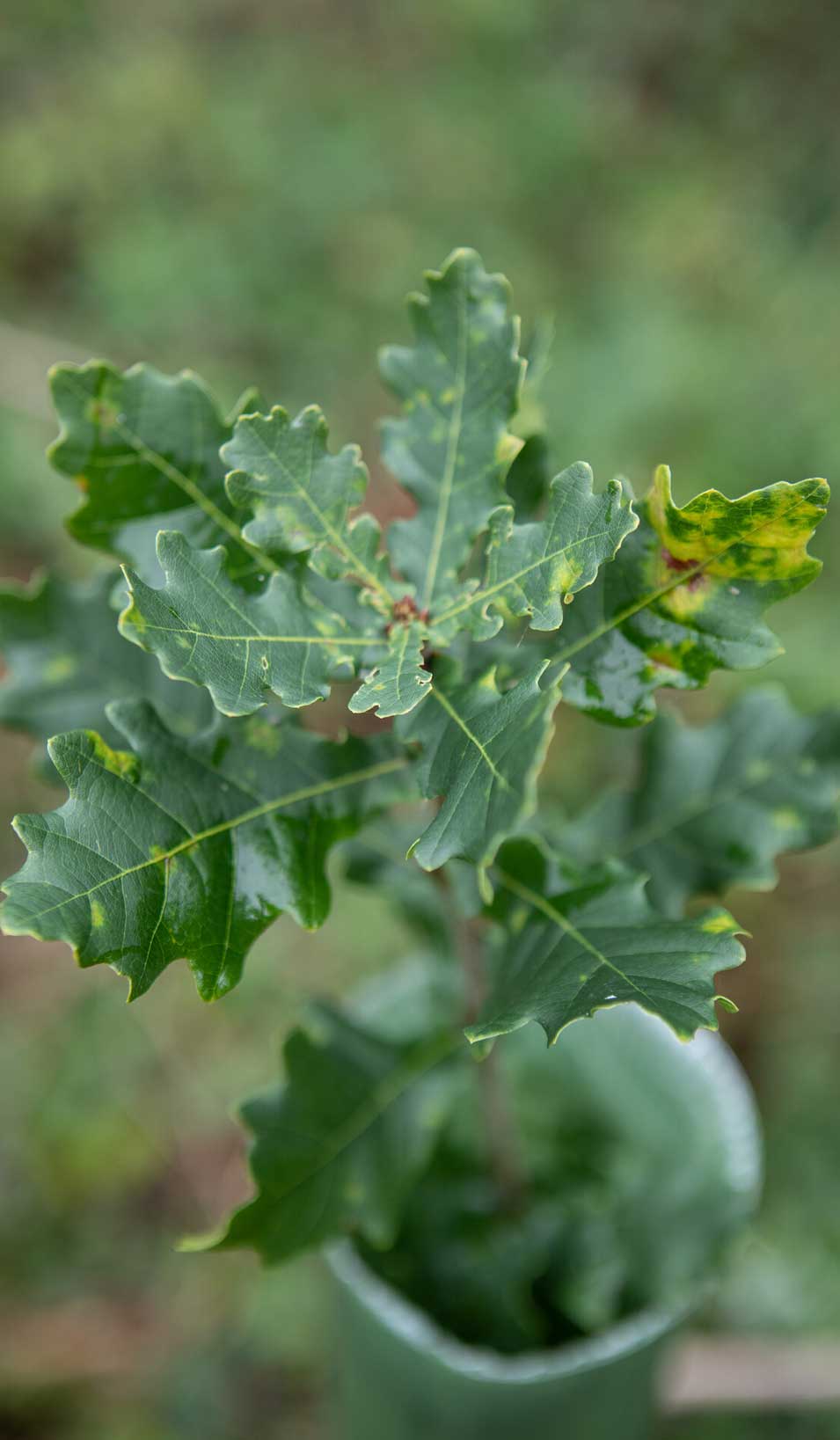The National Park Authority currently administers a Woodland Creation Grant Scheme. The scheme has been designed with an aim to enable landowners from across the National Park to create areas of native woodland and wood pasture.
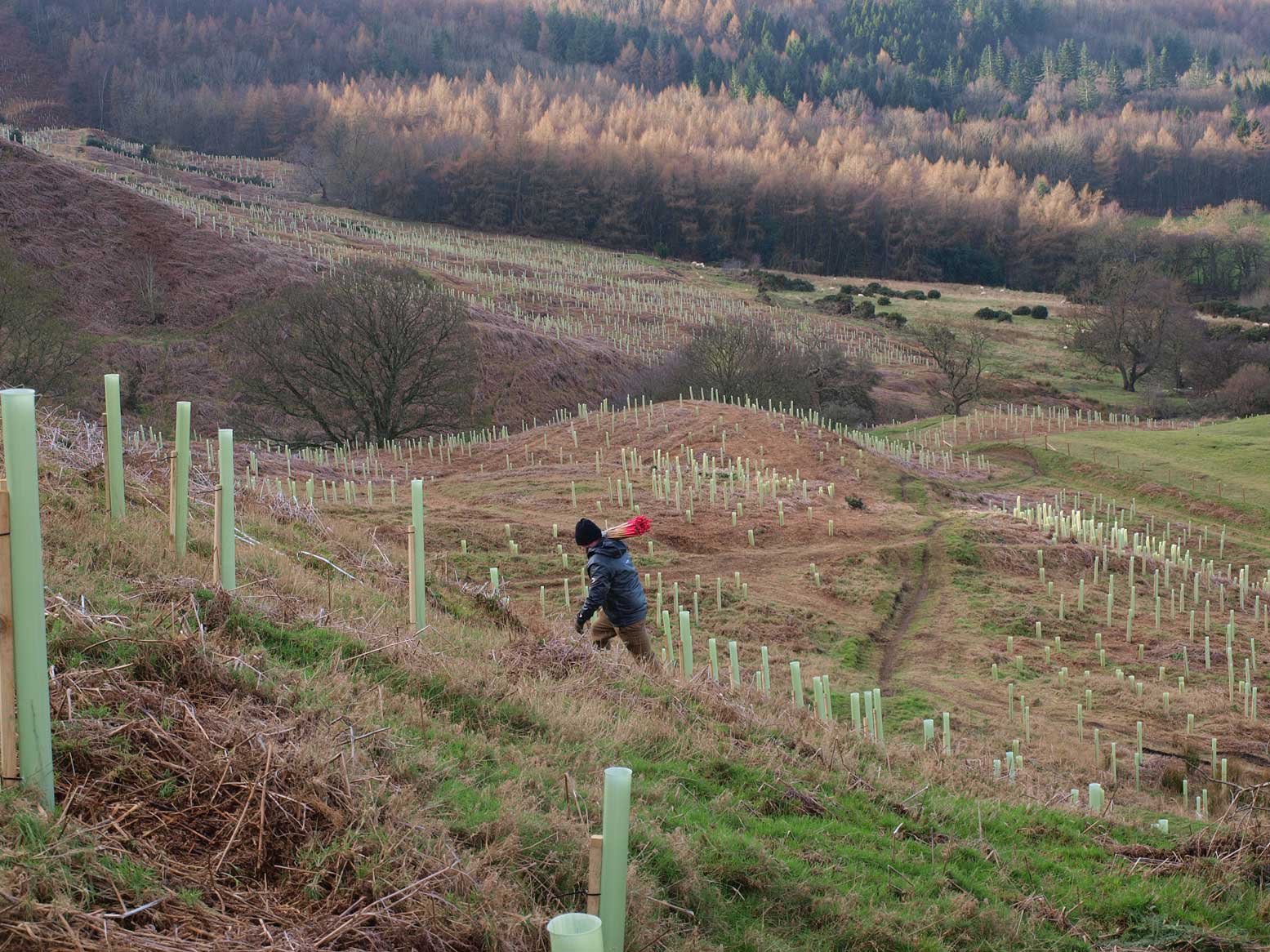
Grant criteria
To be eligible for the grant a woodland project must:
- Be over 1ha (2.4 acres) in size, this could be comprised of more than one compartment
- Be comprised of tree species native to the area
- Result in over 20% mature woodland canopy. Planting density can be variable and we are able to plant at parkland/wood pasture densities
- Be within the North York Moors National Park boundary
Funding is available for 100% of actual costs for capital works in the first year and a five year follow up maintenance schedule.
Large projects over 10 hectares will receive an additional incentive of £3,000/ha paid as soon as planting is complete. Projects between five and 10 hectares are eligible for an additional payment of £1,000/ha. Funding is also available towards the removal and recycling of plastic tree guards if used.
The National Park’s Woodland Creation Officer can provide landowners with support in developing their proposal, appropriate woodland design, species choice, works and management programme. Find out more about the grant scheme on the Frequently Asked Questions page, and our woodland work and tree planting projects we've already supported.
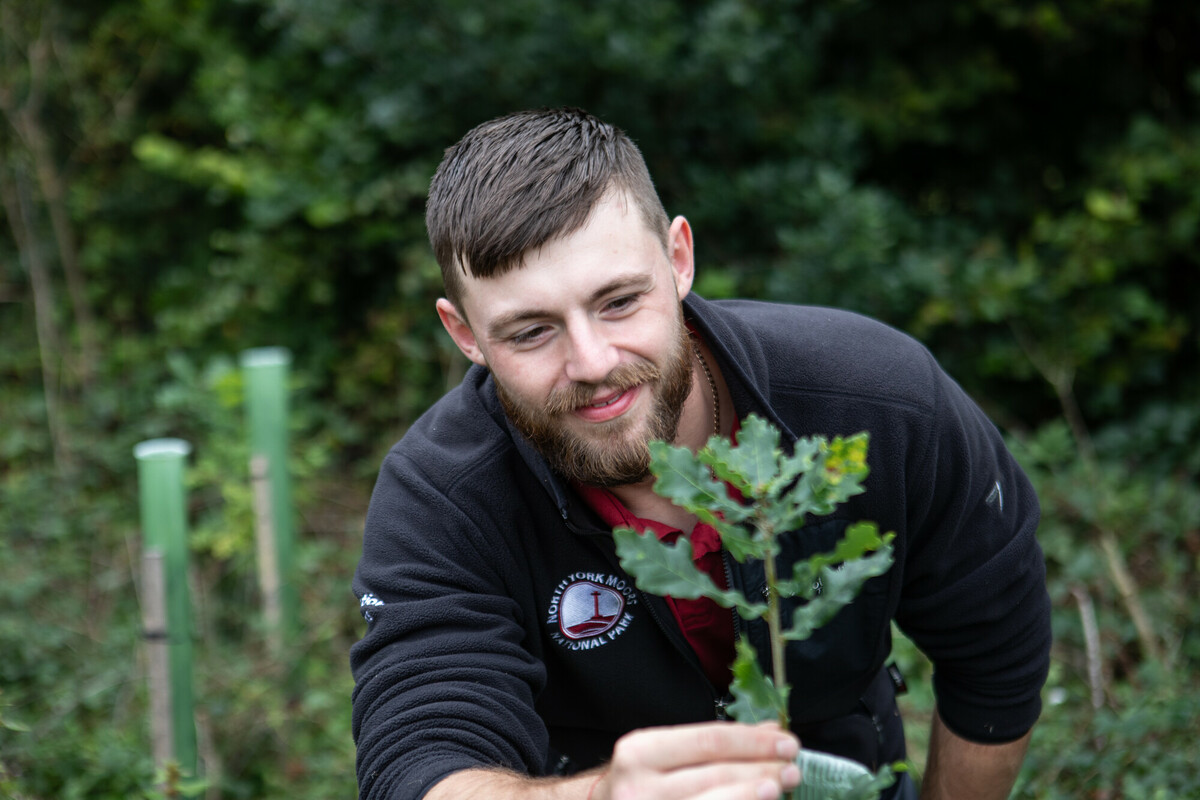
Case studies
Our first project of the 2023/24 season included the creation of a low-density wood pasture.
Creation of 3.52 hectares of diverse wooded habitat on the outskirts of Helmsley.
Through our Woodland Creation Grant, Prospect Farm House was awarded a grant to create and establish 1.06 hectares of mixed native broadleaf woodland, wood-meadow and traditional orchard.
Benefits of woodland creation
In the past, many areas within the North York Moors had more trees and woodland cover. Today, while woodland and forest covers about 23% of the National Park, just 2% is Ancient Semi Natural Woodlands, which has resulted in the reduction and/or loss of some key woodland species in the National Park, including the hazel dormouse and pied flycatcher.
Assuming the most appropriate tree species are planted in the right place, in the long term new native woodland creation contributes to restoring these habitats by extending existing woodlands, connecting woodland fragments and creating entirely new woodland habitats.
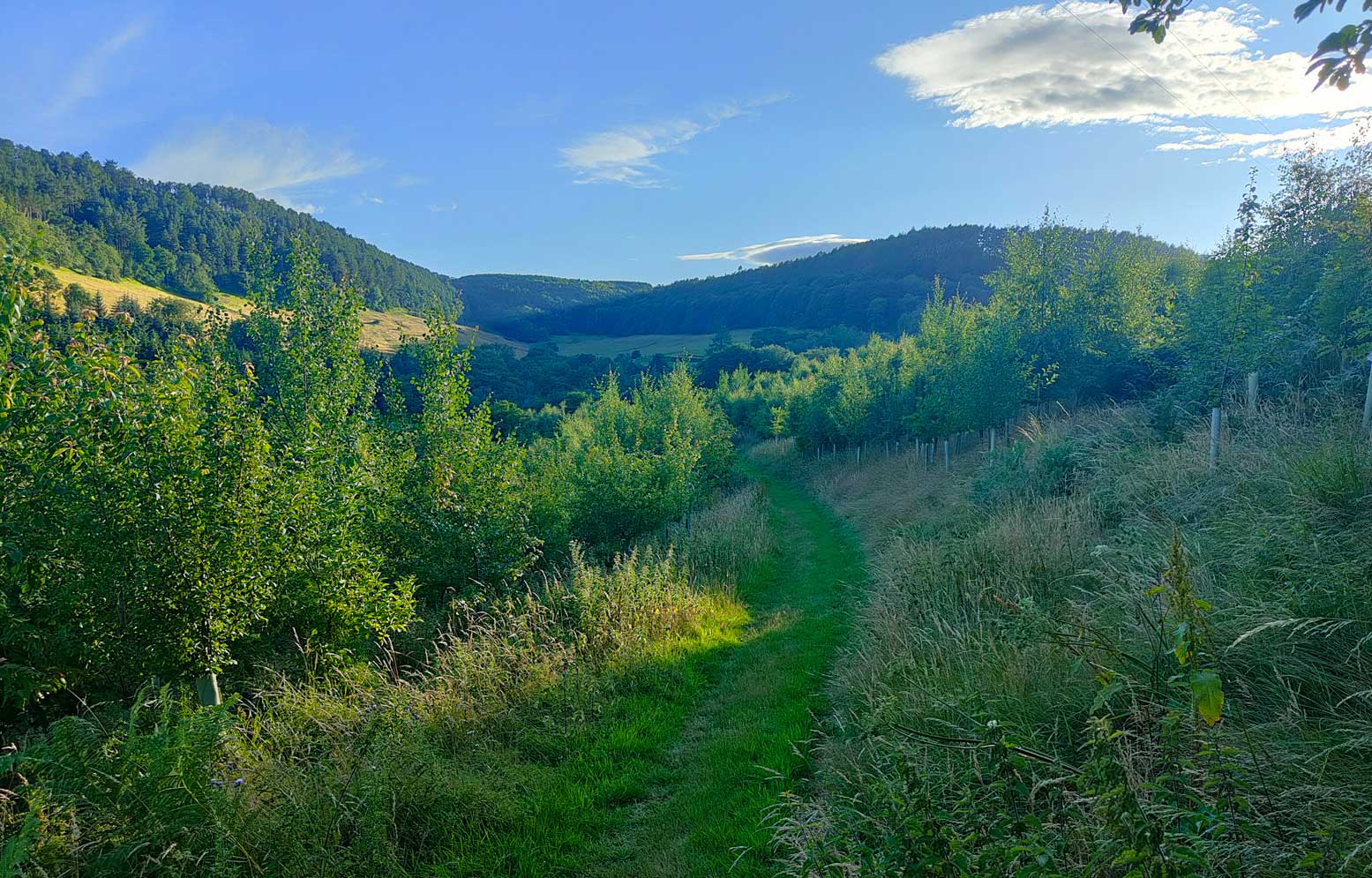
Some of the benefits of woodland creation include:
- Shelter - trees and woodland copses planted in the right place on a holding can provide essential shelter for livestock and game birds. It has been shown in many cases that the shelter provided by trees has resulted in a significant reduction in lamb losses during cold, wet and windy weather. Shade provided by trees also improve animal welfare in summer.
- Income - woodland created in suitably accessible locations can be designed to provide a future income through the sale of timber. Potential income sources may include sporting use and rewards for providing public benefits e.g. reducing flood risk, improving health and wellbeing.
- Convenience - woodland is often a good solution to land use issues such as unproductivity and inaccessibility. This can create more convenient land management parcels.
- Wildlife - woodlands are one of the most diverse habitats in England, with many birds, mammals, insects and plants specialising in woodland environments meaning that they are critical for biodiversity. Creating even small areas of woodland has the potential to greatly increase the number of species in almost any landscape.
- Carbon Capture - the increase in the release of greenhouse gases into the earth’s atmosphere, particularly carbon dioxide is contributing to climate change. Trees produce their own food by using sunlight and take in carbon dioxide (photosynthesis), a process, which then produces oxygen. So trees actually take in and capture carbon dioxide and produce essential oxygen.
- Improved soils - trees have been shown to improve soils by reducing erosion and water logging.
- Landscape - well sited wooded habitats can have a very beneficial impact on the landscape for future generations.
Is this grant right for you?
There are a lot of different grant schemes currently available and it can be confusing when deciding which scheme to consider. A big advantage of this grant scheme is that there is no application form and that the National Park Authority's Woodland Creation team will help throughout the whole process, from getting permissions to checking contractors' work.
The Woodland Creation Grant Scheme is very flexible and can fund wood pasture as well as ungrazed woodland at variable densities. We are also keen to create woodland through natural colonisation so if you have an area of land where young broadleaved trees are developing naturally we could support you to enable this to develop further.
Due to the source of the funding for this scheme, projects benefitting from the grant will not be able to claim additional funding for carbon.
What do we check?
We look at each project/proposal very carefully and make a lot of considerations before any planting takes place. These can include:
- Existing ecology
- Historic environment
- Current land use
- Landscape impact
- Links to other habitats
- Soils
Parish Council consultation - Public access and Rights of Way
- Potential impacts on adjacent SSSI, SAC, SPA or other designations
- Tree species choice and resilience to climate change
- The Forestry Commission's screening for an Environmental Impact Assessment Enquiry for Afforestation
Get in touch
If you are interested in woodland creation and tree planting and have a project/proposal in mind then please contact our Woodland Creation Team via email at: conservation@northyorkmoors.org.uk or phone 01439 772700.
FAQs
Download our frequently asked questions document about the scheme
This document also includes a form should you wish to make any initial enquiries with our team.

